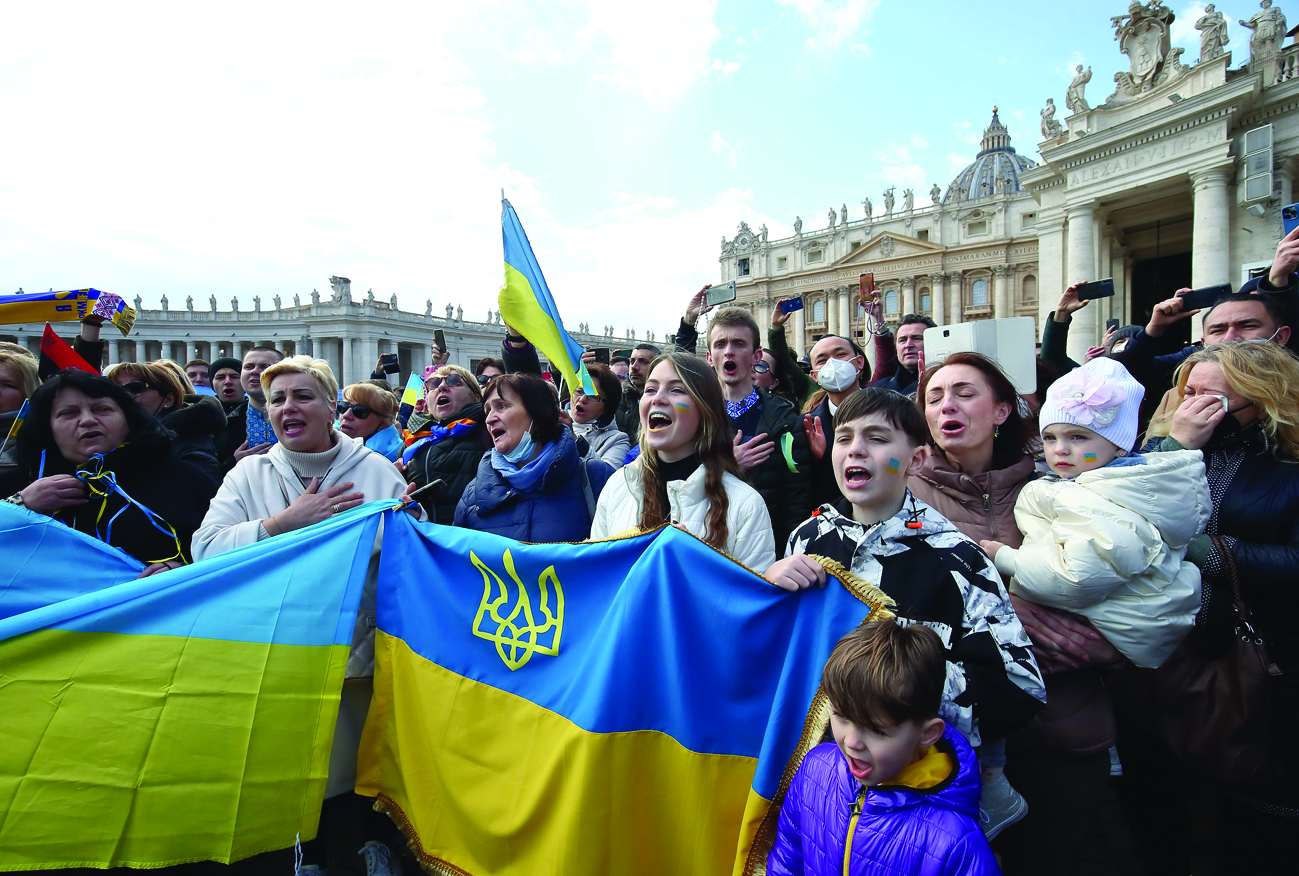For the first time in history, 100 original documents, chosen from the several million and constantly-growing number of diplomas, edicts, manuscripts, codices, parchments, registers, bulls, papal briefs, accounting ledgers, trial records, and letters, usually conserved on some 53 miles of shelves in the Vatican Secret Archive, have left the confines of Vatican City’s Leonine Walls and are on display until September 9 in Rome’s Capitoline Museums. These Museums were founded in 1471 by Pope Sixtus IV, Francesco Della Rovere, as part of his far-reaching plan for the rebirth of classical Rome. This great art patron was also the statutory founder of the Vatican Library in 1475.
This unique cultural event marks both the 1,900th anniversary of the Roman Emperor Constantine’s conversion to Christianity in 312 AD and the 400th anniversary of the Archives’ foundation in 1612 AD by Pope Paul V Borghese. As the press kit explains: “The show’s title, Lux in Arcana (“light on the mysteries” or “hidden things”), describes its main goal: the light that filters into the recesses of the Archives illuminates a reality that can be put to use only through direct and concrete contact with the sources kept in the Archives, which is opening its doors to the discovery of the history (some hitherto unpublished) recounted in the documents.”
“The Popes’ archive,” explained its prefect, His Excellency Monsignor Sergio Pagano, bishop of Celene, at the press preview on February 29, “reveals itself for what it is: guardian of the Catholic Church’s two-thousand-year-long historical memory, from the time when the Church was the whole world, and later on too. Because the exhibition is aimed at an international general public, we decided to include at least two documents from every continent as well as to feature the universality of the Church and the uniqueness of the Archives’ contents.”
In Latin, secretum means “private” or “personal,” so these documents are the Popes’ private papers, and not “purposely hidden.”
Thus the Vatican Secret Archives are like all other state archives and Lux in Arcana is meant to dispel the cloud of mystery still enveloping them, even though they’ve been open to scholars since 1881.
In fact, the documents in Lux in Arcana cover an uninterrupted span of time from the 8th century AD to the 20th century. They are written in many languages: Chinese, cryptography (a secret code for deciphering Pope Alexander VI’s correspondence), English, French, German, Greek, Italian, Japanese (a letter of congratulations from Emperor Hirohito to Pope Pius XII on his election), Latin, Mongolian, Persian, Quechua (the language of the Incas), and Spanish. They are written on different supports (paper, silk, bark, parchment) and come from different continents (Europe, Asia, America, Africa).
The opening section, “The Custodian of Memory,” gives an overview of the Archive’s contents. Items on display here include many priceless documents, notably the oldest codex in the Archives, Liber diurnus Romanorum Pontificum, dating to the 8th-early 9th century, which, according to the exhibition catalog, is “invaluable evidence of ecclesiastical practices and of the style of the official documents written by the Roman pontiffs; of the manner of their election and their relations with the highest secular authorities in different eras, from the emperor in Constantinople to the exarch of Ravenna; of the administration of the Patrimonium Petri; and many other matters as well.” The Liber Diurnus is a key source for Church history from the 6th to the 9th century.
Also to be seen are the papal register by Pope Honorius III of St. Francis of Assisi’s Regula Bullata on November 23, 1223, considered the “official” birth certificate of the Franciscan movement, which codifies in 12 chapters the principles of evangelical life as St. Francis imagined it; the oldest paper document, 1279, written in Mongolian, which is a safe-conduct or pass signed by Abaqa, Il-Khan of Persia, enabling a Christian embassy to travel safely back to the West; Charles V’s Edict of Worms dated May 8, 1521, banishing Martin Luther as a heretic; a bull canonizing St. Francis Xavier issued by Urban VIII on August 6, 1623, and one of the first acts of his papacy; the proceedings of Galileo Galilei’s trial, which lasted from 1616 to 1633, when he was convicted by the Inquisition of heresy because of his defense of Copernicus’ theory of the universe; a letter written on silk and addressed by the last Ming Empress of China, Helena, a convert, to Pope Innocent X on November 4, 1650, in which she professed her Catholic faith and asked him to pray to God for the Mings to win against the Manchus, and for the conversion of her husband, the Emperor Yongli.
There are also an invoice for two of his angels on Rome’s Sant’Angelo Bridge, signed by Gian Lorenzo Bernini in December 1669; a brief issued by Pope Clement XIV on July 4, 1770, conferring the Order of the Golden Spur on Mozart; and letters sent by illustrious correspondents: one from Michelangelo in around 1550 to Cristoforo Spiriti, the bishop of Cesena and future Patriarch of Jerusalem, describing the dangerous working conditions at the construction site of St. Peter’s; and one with numerous wax seals from 83 members of the English Parliament threatening Pope Clement VII if he should refuse to grant Henry VIII a divorce from Catherine of Aragon, thereby enabling him to marry Anne Boleyn (1530).
Here of particular interest to Americans are Pope Alexander VI’s Inter cetera bull, dated May 4, 1493, on the discovery of the New World, granting Spain possession of all the islands and lands (already known and or that would be discovered in the future) lying west of an imaginary line of demarcation one hundred leagues west of the Azores and the Cape Verde Islands and stretching from the North Pole to the Antarctic; a letter from Jefferson Davis, president of the Confederacy, dated September 23, 1863, to Pope Pius IX, thanking the Holy Father for his ardent desire for peace, which Southern leaders mistakenly interpreted as the Pope’s recognition of the Confederacy; a letter from Abraham Lincoln to Pius IX dated November 16, 1863, accrediting Rufus King as the United States’ resident representative to the Holy See; and a message written on birch bark to the “Great Master of Prayer” or Pope Leo XIII on May 21, 1887, by the leader of the Christian community of the Ojibwe Indians in today’s Michigan and Ontario, thanking him for having sent them a priest.
After “Custodian of Memory” the exhibition’s layout is divided into eight thematic, not chronological, sections. “Tiara and Crown” contains 12 documents related to the centuries-long debate between spiritual and temporal power. It includes a copy of the forged “Donation of Constantine”; the Privilegium Ottonis (962), which allowed the emperor to intervene in papal elections; Boniface VIII’s bull Unam sanctam (1302), which asserts the supremacy of papal authority over any other temporal power; the surrender of the papal army in 1870, and the Lateran Pacts of 1929.
“In the Conclave’s Secrecy” documents the historic evolution of papal elections and includes Pope Gregory X’s Ubi periculum bull of 1274, which establishes general rules governing the conclave’s proceedings, and the cardinals’ letter (1294) announcing the election of Celestine V, the only Pope in history to resign.
“Reflection and Dialogue” recounts the Church’s internal thinking, its dialogue with other Christian denominations and other religions, and its movement from the strict rules of the Council of Trent to the less strict decrees of Vatican Council II. On display are Paul III’s bull convoking the Council of Trent in 1542 and that of Pope John XXIII convoking Vatican Council II in 1961.
“Gold and Ink” displays fine manuscripts and illustrated codices, the most beautiful being a register of the oaths of fealty to Pope Innocent VI and the Liber privilegiorum Romanae Ecclesiae (Book of Privileges of the Roman Church), compiled by Bartolomeo Platina, the first librarian of the Vatican Library, for Pope Sixtus IV between 1476 and 1480.
Among the documents in “Heretics, Crusaders, and Knights” are the records of the trial of the Templars of France, written on a 60-meter-long parchment roll; Leo X’s bull (1521) excommunicating Martin Luther, and a letter from John Sobieski, King of Poland, to Pope Innocent XI on September 14, 1683, informing him of the Christian forces’ victory over the Turkish army.
“Saints, Queens, and Courtiers” contains letters from famous women: Lucrezia Borgia to her father Pope Alexander VI (1494); Mary Stuart to Pope Sixtus V just before she was beheaded in 1586; Christine of Sweden’s solemn abdication deed in 1651; a despairing message from Marie Antoinette in prison; and the 1876 letter from Bernadette Soubirous to Pius IX describing her vision of the “Immaculate Conception” at Lourdes.
“Scientists, Philosophers, and Inventors” includes Pope John XXII’s bull recognizing Cambridge University in 1318, a printed copy of the new Gregorian calendar for 1582, and a design of a singular flying machine (1709) invented by a Brazilian priest named Bartolomeu Lourenço de Gusmão.
As Cardinal Archivist and Cardinal Librarian Raffaele Farina explained in his interview with my colleague Angela Ambrogetti published in Inside the Vatican, November 2011, the Archives’ contents until the end of the pontificate of Pius XI in 1939 are available to scholars. Later documents are still not consultable “out of common sense and respect for privacy, especially of persons who are still alive or who have indicated in writing how the documents, which concern them, should be treated. The reason is not to hide who knows what secrets. Except for the obvious concerns for privacy, other reasons have to do with preservation and conservation, with organizing, classifying and making the documents possible to consult… The pontificate of Pius XII (1939-1958) will be all open in three or four years.”
However, Tarcisio Cardinal Bertone, secretary of state, made an exception for this exhibit. “The Closed Period” contains heart-wrenching documents from the Second World War: a report in German from the apostolic nuncio to Italy to the Vatican’s secretariat of state about the conditions at Ferramonti in Calabria, one of Italy’s major wartime concentration camps; a detailed report to the Curia by a Salesian priest of the bloodshed at the Fosse Ardeatine and an appeal from a woman for news of her husband who had died there; a Black Madonna handmade from scraps for Pope Pius XII by Polish women imprisoned at Oberlangen; a notebook kept by an Austrian priest with a list of his fellow-priest prisoners at Dachau because they had refused to subscribe to the Nazi regime’s propaganda; and 12 bomb fragments conserved by a papal gendarme from a Fascist air raid on November 5, 1943 over Vatican City in the hopes of destroying the Vatican Radio’s broadcasting equipment. At first the raid had been mistakenly attributed to the Americans, but the plane had taken off from Viterbo, in other words flying from north to south, and the US forces were still south of Rome.
Following the 100 representative examples of its contents, the layout continues with sections concerning the daily activities in the Archives’ three laboratories: Seals Restoration and Conservation Laboratory; Restoration, Conservation and Binding Laboratory; and Digital Photoreproduction Laboratory, which has already acquired around 2.5 million digitized images.
Since 1980 the Seals Laboratory has examined and restored more than 5,000 seals. The Archives preserves hundreds of thousands of seals made of lead, gold, beeswax, sealing wax, paper and wax under paper. One outstanding specimen in the final section, “Symbols of Power,” is on a diploma issued by King Philip of Spain, his solid gold seal weighing nearly 2 pounds.






Facebook Comments